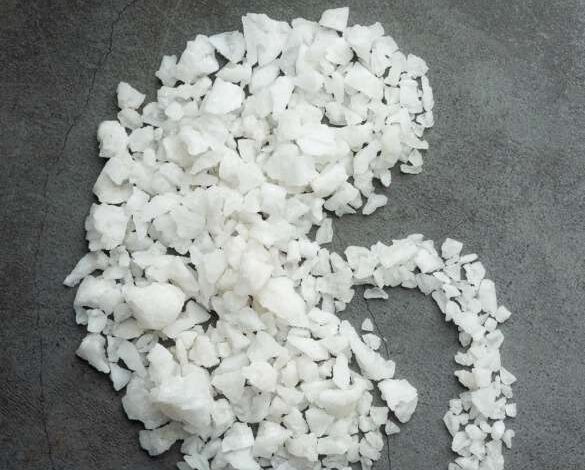Indian Diet Chart for Diabetes and Kidney Patients (PDF Diabetic Nephropathy Diet Plan)

Indian Diet Chart for Diabetes and Kidney Patients (PDF Diet Plan). Indian diet plan for diabetes and kidney disease. “My sugar is in control; let me have 1 more candy.” The majority of diabetics would have faced this situation. But they forget that they are exhausting the pancreas for insulin. Here is Indian Diet Chart for Diabetes and Kidney Patients (PDF Diabetic Nephropathy Diet Plan).
In long-standing diabetes, high sugar levels gradually affect other organs in the body. It could be damaged
- the eyes; diabetic retinopathy
- nervous system; diabetic neuropathy
- kidney culprits; diabetic nephropathy
Uncontrolled blood sugar increases blood volume and makes it fat. This leads to circulatory disorders. The excess sugar is deposited in and around cells and organs, damaging them. Diabetic nephropathy is caused when a person who has diabetes also has uncontrolled high blood pressure and high cholesterol. The uncontrolled sugar damages the kidney cells and impairs their ability to filter the blood.
Diabetic Nephropathy Diagnosis:
The most common way to diagnose diabetic nephropathy is to detect albumin in the urine. The damaged kidneys cannot retain proteins and therefore excrete proteins in the urine. There may also be an electrolyte imbalance. There are no other symptoms to physically detect nephropathy, so renal profile testing should be done every 6 to 12 months.
Symptoms of Progressive Diabetic Nephropathy:
There may be minimal or no symptoms associated with diabetic nephropathy. However, when kidney function worsens, you may see the following symptoms:
- water retention
- Swelling of hands, feet and face
- loss of appetite
- nausea and vomiting
- Dry skin with itching
- Darkening of the skin on the lower limbs
- concentration deficit
- weakness and drowsiness
- palpitations
- muscle twitches
As kidney dysfunction progresses, insulin is no longer excreted and continues to circulate in the body. This can lead to a drop in blood sugar. Prolonged uncontrolled diabetes, requires monitoring of diabetic nephropathy.
Treatment of diabetic nephropathy
- Drug: The first precaution is to control blood sugar as well as blood pressure with medication. Switch to drugs that help slow the progression of kidney damage.
- Nutritional Control: Eat a diet high in fibre, low in carbohydrates and protein and low in fat at the same time. Consume 25 kcal per kg of body weight and 0.8 g of proteins per kg of body weight. Divide meals into small meals to avoid both sharp sugar spikes and blood sugar dips.
Indian Diet Chart for Diabetes and Kidney Patients (Diet for Diabetic Nephropathy)

food allowed Indian Diet Chart for Diabetes and Kidney Patients
Consume complex carbohydrates that maintain blood sugar, relieve constipation, aid in weight loss, and don’t further damage the kidneys. Add whole wheat flour, millet, oats, quinoa, broken wheat, vermicelli, varai, and sama. Try to eat only one grain at a time to avoid blood sugar spikes. Consume high-fiber foods to keep blood sugar in check, reduce weight, avoid overeating, and lower cholesterol.
Legumes and lentils provide the proteins needed to replace urinary albumin loss. These are also high in fiber, which helps maintain blood sugar levels. Include 2-3 servings of legumes, deals, or sprouts in your daily diet.
Nuts provide high-quality fats, fiber and proteins. Eating nuts between meals not only satisfies hunger pangs, but also prevents sugar waste and overeating at the next meal. For better nutrient absorption, soak the nuts and then consume them.
Milk provides high-quality protein that compensates for the loss of protein in the urine. It prevents muscle wasting in the body and provides calcium and other minerals. Consume 2-3 servings of low-fat dairy products. The calcium and minerals in milk help prevent osteoporosis, which is commonly seen in patients with nephropathy.
Eggs and poultry provide high-quality protein that helps treat diabetes, repair kidney cells, and prevent muscle wasting. Fish provides omega-3 fatty acids, which not only improve insulin sensitivity but also reduce stress and inflammation. It also provides vitamin D. Consume 1-2 servings of fish or poultry daily. Do not fry fish or chicken. Replace frying with steaming, boiling, roasting, grilling, and baking.
Fruits and vegetables are rich in fiber. Eat fruit only if serum potassium levels are normal. Consume fibrous fruits like apples, pears, papaya, guava, pineapple, berries, persimmons, dragon fruit, etc. Avoid fruits like bananas, chicco, sitaphal, and mango. Eat only 1 fruit in a day when blood sugar is in the normal range. Bleed green leafy vegetables before eating to remove excess potassium. Consume 2-3 servings of vegetables daily.
Download PDF Low Potassium Indian Foods List
A high-fat diet increases insulin resistance and worsens blood sugar. Keep fat intake between 25 – 30g per day. Consume either peanut oil, olive oil, rice bran oil, or canola oil. Include high-quality fats like walnuts, flaxseeds, and also chia seeds.
Nephropathy leads to water retention in the body. Excessive salt intake not only increases water retention but also raises blood pressure. Limit salt intake to 1-1.5 teaspoons per day. Avoid processed foods, canned foods, baked goods, and packaged foods high in salt and sodium preservatives.
Advanced nephropathy leads to swelling and water retention. Excessive fluid intake can increase water retention. Consume fluids equal to your urine output plus 500ml of imperceptible sweat loss.
Indian Diet Chart for Diabetes and Kidney Patients
Example diet plan for diabetic nephropathy in PDF format
(NOTE: If the patient’s blood glucose level is above 300 mg/dL, a custom nutrition plan is required.)
Empty Stomach: Soaked nuts (almonds, walnuts, apricot)
Breakfast: 2 Methi Thepla + Green Chutney + 1 cup milk
Morning: 1 fruit or 2 egg whites or 40g paneer
Having lunch: 1 cup salad + 2 phulkas + 1 cup vegetables + 1 cup thick dal or 1 small dal vegetable tikki or ½ cup sprouts + 1 cup cottage cheese or 100g chicken or fish
Snacks: 1 cup soaked oatmeal with chia seeds and flax seeds + 1 date
Dinner: 1 cup vegetable salad + 1 millet roti + 1 cup vegetables + 1 cup cottage cheese
bedtime: 1 cup turmeric milk
Download the PDF example Diabetes and Kidney Patients Indian Diet Chart
final remark
Early detection of kidney damage is necessary to slow the progression of nephropathy. If left untreated, it can lead to end-stage kidney failure and you may need to undergo dialysis. Work to maintain normal blood pressure and blood sugar, and make lifestyle changes that help with long-standing diabetes. I hope the above mentioned Indian Diet Chart for Diabetes and Kidney Patients (PDF Diet Plan for Diabetic Nephropathy) helps you.



